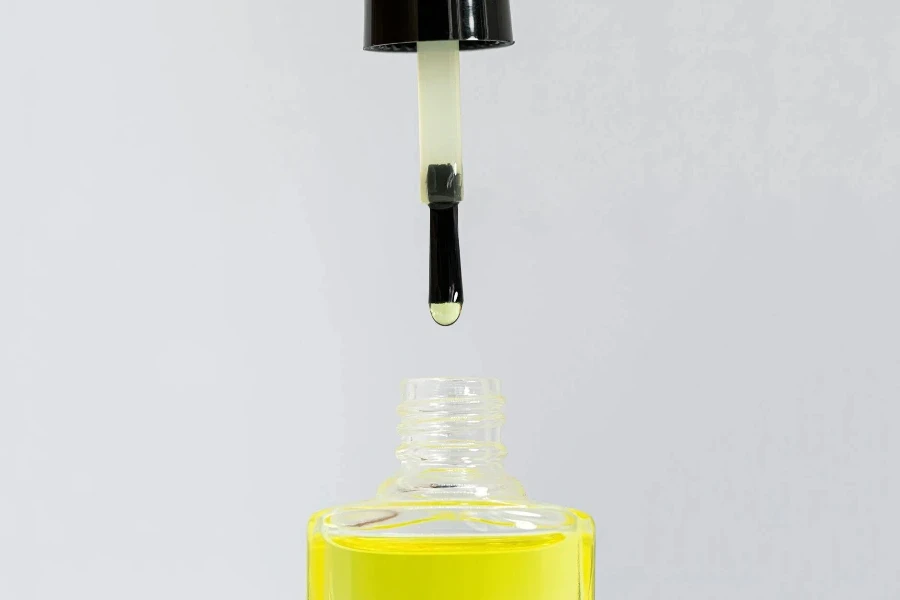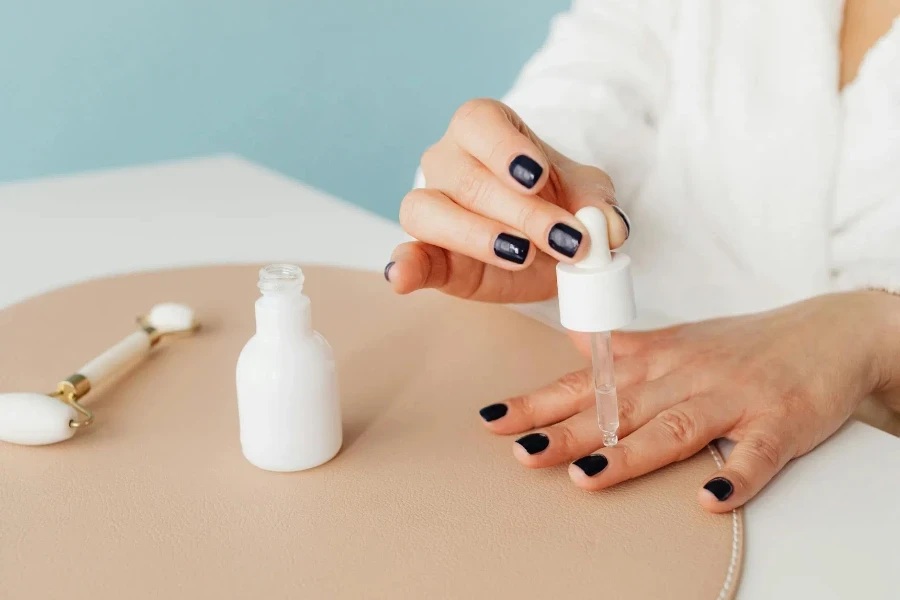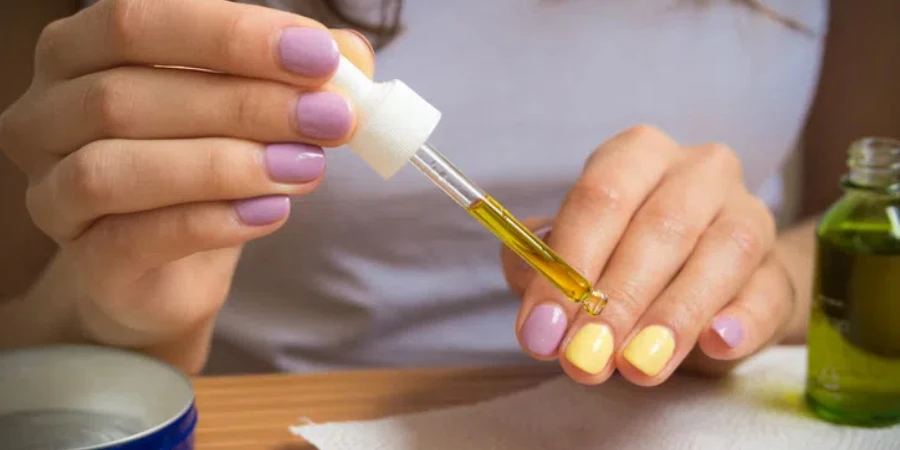In the ever-evolving beauty industry, cuticle oil has emerged as a must-have product, gaining significant traction among beauty enthusiasts and professionals alike. This article delves into the rising popularity of cuticle oil, exploring its essential role, market potential, and the social media trends propelling its growth.
Table of Contents:
– Exploring the Rising Popularity of Cuticle Oil in the Beauty Industry
– Diverse Types of Cuticle Oils: Pros, Cons, and Consumer Insights
– Addressing Consumer Pain Points with Innovative Solutions
– Key Considerations for Sourcing High-Quality Cuticle Oil
– Final Thoughts on the Future of Cuticle Oil in the Beauty Market
Exploring the Rising Popularity of Cuticle Oil in the Beauty Industry

Defining Cuticle Oil and Its Essential Role
Cuticle oil, a specialized product designed to nourish and protect the cuticles, has become a staple in nail care routines. Composed of a blend of natural oils and vitamins, it helps to moisturize and strengthen the cuticles, preventing dryness and damage. The application of cuticle oil not only enhances the appearance of nails but also promotes overall nail health, making it an indispensable product for both personal and professional use.
Analyzing Market Potential and Demand Growth
The market potential for cuticle oil is substantial, driven by the increasing consumer awareness of nail health and the growing trend of at-home manicures. According to a professional report, the global cosmetic oil market, which includes cuticle oil, is expected to reach USD 84.63 billion by 2030, growing at a CAGR of 5.2% from 2024 to 2030. This growth is fueled by the rising demand for natural and organic beauty products, as consumers become more conscious of the ingredients in their skincare and nail care routines. The shift towards clean beauty and the preference for products with natural ingredients are key factors contributing to the expanding market for cuticle oil.
Trending Social Media Hashtags and Broader Trend Alignment
Social media platforms play a pivotal role in the popularity of cuticle oil, with influencers and beauty enthusiasts sharing their nail care routines and product recommendations. Hashtags such as #CuticleCare, #NailHealth, and #ManicureMonday have gained traction, driving consumer interest and engagement. The alignment of cuticle oil with broader beauty trends, such as the emphasis on self-care and wellness, further amplifies its appeal. The trend towards DIY beauty practices, where consumers seek to replicate salon-quality results at home, also boosts the demand for cuticle oil. As the beauty industry continues to evolve, cuticle oil is poised to remain a key player, catering to the growing consumer preference for effective and natural nail care solutions.
Diverse Types of Cuticle Oils: Pros, Cons, and Consumer Insights

Natural vs. Synthetic Ingredients: What Works Best?
The debate between natural and synthetic ingredients in cuticle oils is ongoing, with each having its own set of advantages and disadvantages. Natural ingredients, such as jojoba oil, argan oil, and coconut oil, are highly favored for their nourishing and moisturizing properties. These oils are rich in vitamins, antioxidants, and essential fatty acids, which contribute to healthier cuticles and nails. According to a report by Research and Markets, the demand for natural and organic cosmetic oils has surged due to their perceived health benefits and sustainable sourcing practices. Consumers are increasingly wary of synthetic chemicals and prefer products that are derived from natural sources.
On the other hand, synthetic ingredients in cuticle oils can offer consistency and stability that natural oils sometimes lack. Synthetic oils are often formulated to have a longer shelf life and can be engineered to target specific issues, such as dryness or brittleness. However, the rising awareness of the potential negative effects of synthetic chemicals has led to a decline in their popularity. Business buyers must weigh the benefits of natural ingredients against the practicality and cost-effectiveness of synthetic options when sourcing cuticle oils.
Effectiveness and Consumer Feedback on Popular Brands
Consumer feedback plays a crucial role in determining the effectiveness of cuticle oils. Brands like CND SolarOil and OPI ProSpa Nail & Cuticle Oil have garnered positive reviews for their ability to hydrate and strengthen cuticles. CND SolarOil, for instance, is praised for its blend of jojoba oil and vitamin E, which penetrates deeply to nourish the cuticles. According to consumer insights, users appreciate the lightweight texture and quick absorption of this product.
Similarly, OPI ProSpa Nail & Cuticle Oil is noted for its luxurious formula that includes grape seed oil and kukui nut oil. Consumers have reported significant improvements in the appearance and health of their cuticles after regular use. These positive reviews highlight the importance of selecting high-quality ingredients and formulations that meet consumer expectations. Business buyers should consider consumer feedback and brand reputation when sourcing cuticle oils to ensure they are offering effective and desirable products.
Pros and Cons of Different Application Methods
The method of application can significantly impact the user experience and effectiveness of cuticle oils. Traditional brush applicators are common and allow for precise application, making them ideal for targeted treatment. However, they can sometimes be less convenient for on-the-go use. Dropper bottles, on the other hand, offer a more controlled dosage but may require additional tools, such as a brush or cotton swab, for application.
Rollerball applicators have gained popularity for their ease of use and portability. They allow for quick and mess-free application, making them a favorite among busy consumers. However, the rollerball mechanism can sometimes become clogged, especially with thicker oils. Spray applicators are another option, providing a fine mist that can cover a larger area quickly. While convenient, sprays may not offer the same level of precision as other methods.
Business buyers should consider the preferences and needs of their target market when selecting the application method for cuticle oils. Offering a variety of application options can cater to different consumer lifestyles and enhance the overall user experience.
Addressing Consumer Pain Points with Innovative Solutions

Common Issues Faced by Consumers
Consumers often face several common issues when it comes to cuticle care, including dryness, peeling, and sensitivity. Dry cuticles can lead to discomfort and an unsightly appearance, while peeling cuticles can be painful and prone to infection. Additionally, some consumers have sensitivities or allergies to certain ingredients, which can exacerbate these problems. Understanding these pain points is crucial for business buyers looking to source effective cuticle oils.
Innovative Formulations and Packaging Solutions
Innovative formulations and packaging solutions can address these consumer pain points effectively. For instance, incorporating ingredients like hyaluronic acid and ceramides can provide intense hydration and repair the skin barrier, reducing dryness and peeling. Brands like Deborah Lippmann have introduced cuticle oils with advanced formulations that include these ingredients, offering enhanced benefits.
Packaging innovations, such as airless pump bottles, can help maintain the integrity of the product by preventing exposure to air and contaminants. This ensures that the cuticle oil remains effective for a longer period. Additionally, eco-friendly packaging options, such as recyclable materials and refillable containers, appeal to environmentally conscious consumers. Business buyers should look for suppliers that offer these innovative solutions to meet the evolving demands of the market.
Addressing Allergies and Sensitivities
Addressing allergies and sensitivities is another critical aspect of sourcing high-quality cuticle oils. Formulating products with hypoallergenic ingredients and avoiding common allergens, such as parabens and sulfates, can make cuticle oils suitable for a broader audience. Brands like Burt’s Bees have successfully created cuticle oils that are free from harsh chemicals and synthetic fragrances, catering to consumers with sensitive skin.
Furthermore, providing clear and transparent ingredient lists can help consumers make informed choices and avoid potential allergens. Business buyers should prioritize suppliers that adhere to stringent quality control measures and offer products that are safe and gentle for all skin types.
Key Considerations for Sourcing High-Quality Cuticle Oil

Evaluating Supplier Credibility and Product Quality
When sourcing cuticle oils, evaluating supplier credibility and product quality is paramount. Business buyers should conduct thorough research on potential suppliers, including their reputation, manufacturing practices, and quality control measures. Collaborating with reputable suppliers who adhere to industry standards can ensure that the cuticle oils meet consumer expectations for quality and safety.
Understanding Regulatory Compliance and Certifications
Regulatory compliance and certifications are essential considerations for sourcing cuticle oils. Different regions have varying regulations regarding cosmetic products, and it is crucial to ensure that the products comply with local laws. Certifications, such as USDA Organic or COSMOS, can provide additional assurance of the product’s quality and adherence to ethical standards. Business buyers should seek suppliers that offer certified products to meet regulatory requirements and consumer preferences.
Importance of Sustainable and Ethical Sourcing Practices
Sustainable and ethical sourcing practices are increasingly important in the beauty industry. Consumers are becoming more conscious of the environmental and social impact of their purchases. According to a report by Research and Markets, the shift towards natural and organic beauty products has prompted many companies to adopt sustainable sourcing practices. This includes supporting fair trade partnerships, using certified organic ingredients, and investing in regenerative farming practices.
Business buyers should prioritize suppliers that demonstrate a commitment to sustainability and ethical practices. This not only aligns with consumer values but also contributes to the long-term success and reputation of the brand.
Final Thoughts on the Future of Cuticle Oil in the Beauty Market
The future of cuticle oil in the beauty market looks promising, with increasing consumer demand for natural, effective, and sustainably sourced products. Business buyers must stay informed about evolving trends and prioritize high-quality ingredients, innovative formulations, and ethical sourcing practices to meet the needs of their customers. By doing so, they can ensure the continued growth and success of their cuticle oil offerings in the competitive beauty market.





 বাংলা
বাংলা Nederlands
Nederlands English
English Français
Français Deutsch
Deutsch हिन्दी
हिन्दी Bahasa Indonesia
Bahasa Indonesia Italiano
Italiano 日本語
日本語 한국어
한국어 Bahasa Melayu
Bahasa Melayu മലയാളം
മലയാളം پښتو
پښتو فارسی
فارسی Polski
Polski Português
Português Русский
Русский Español
Español Kiswahili
Kiswahili ไทย
ไทย Türkçe
Türkçe اردو
اردو Tiếng Việt
Tiếng Việt isiXhosa
isiXhosa Zulu
Zulu